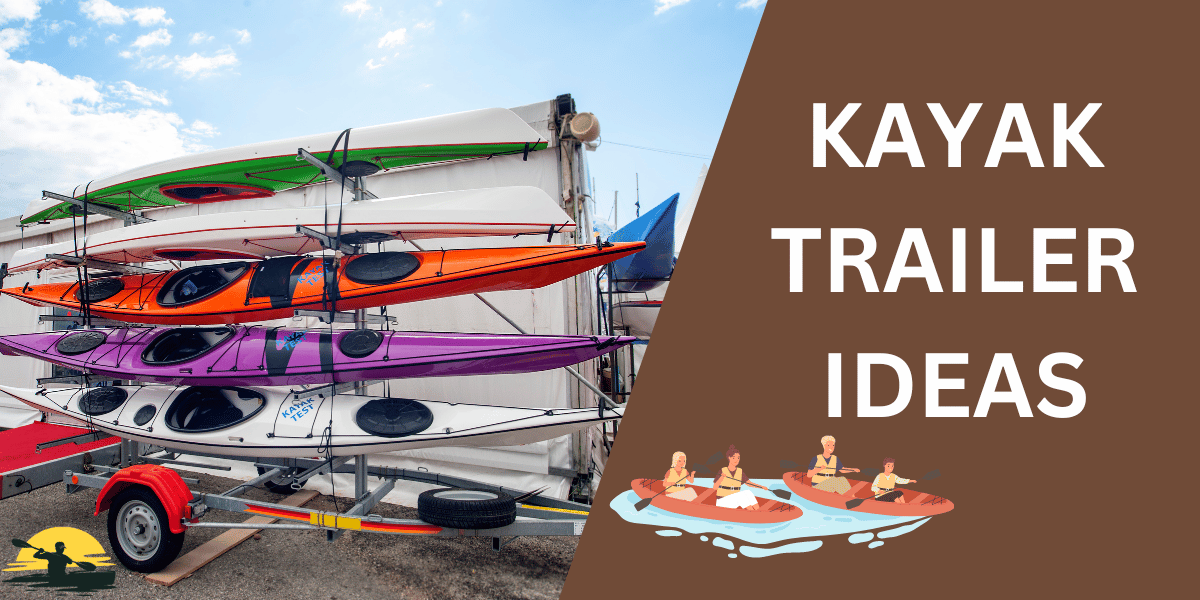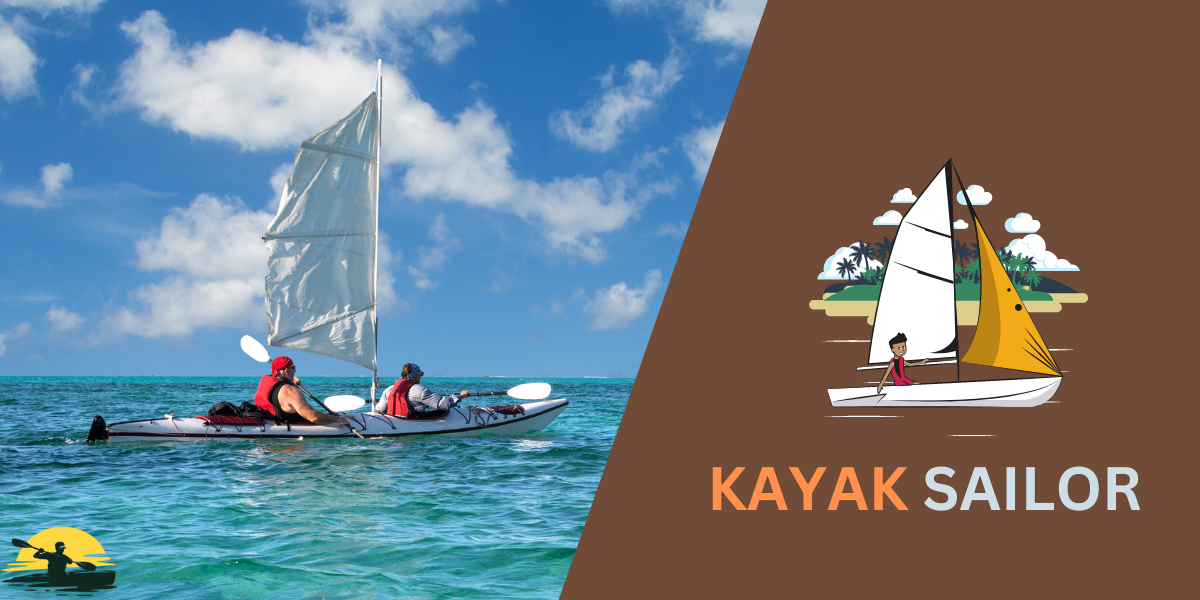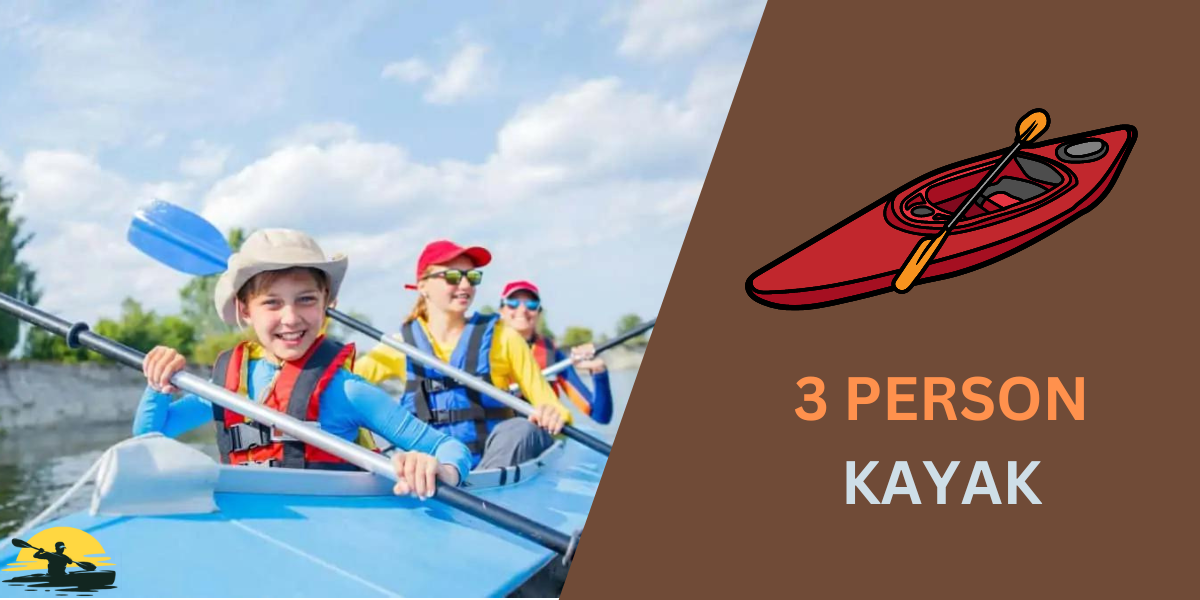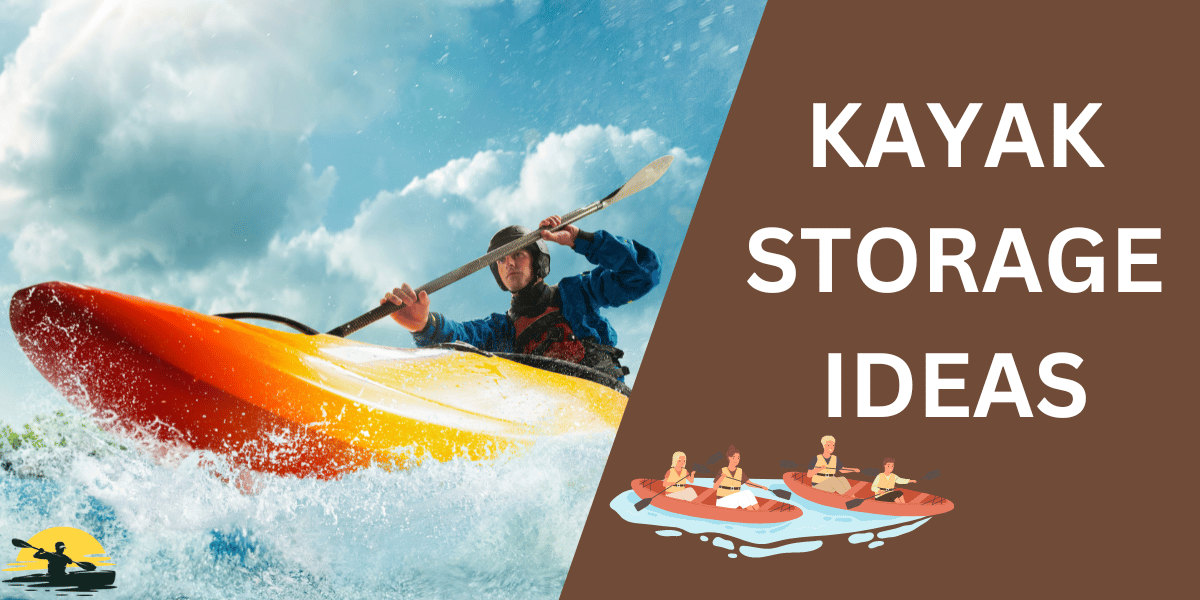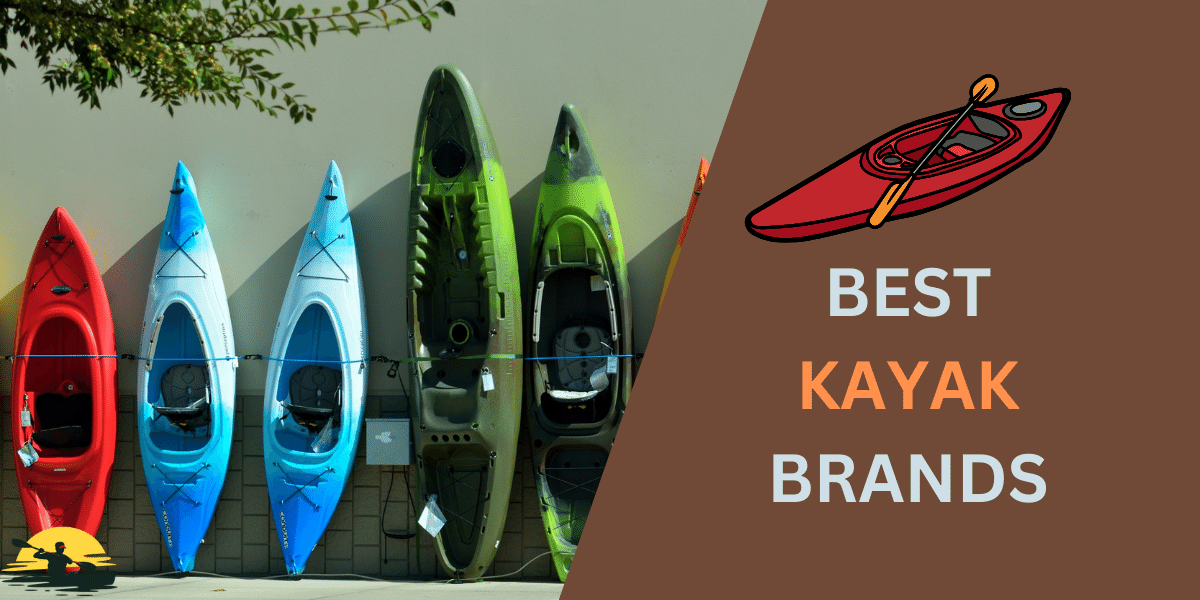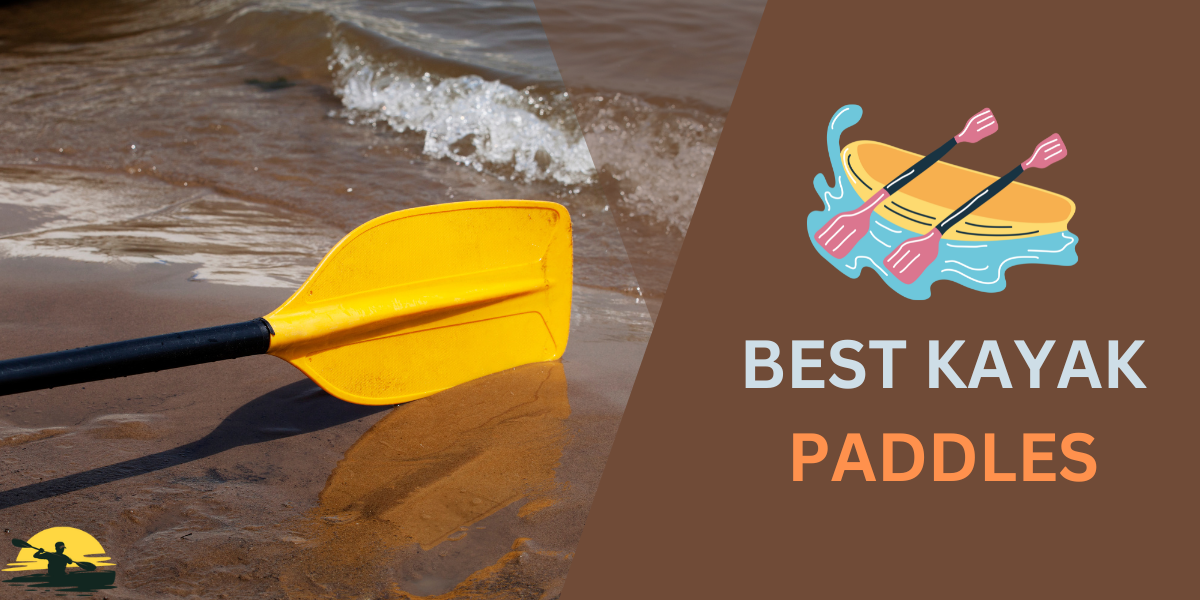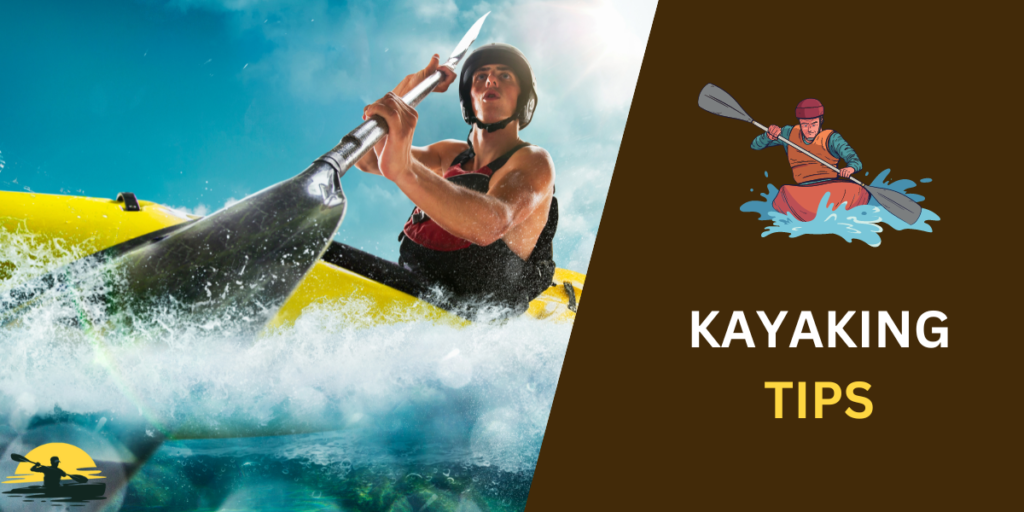
Want to get into kayaking but feel overwhelmed by the gear, the terminology, and where to begin?
Kayaking looks fun, but it may seem like it could be more safe. Between the special equipment, safety concerns, and learning the proper techniques, starting feels like a lot to manage.
Don’t worry! With the right approach, kayaking can be an accessible and gratifying hobby. In this guide, we’ll break down kayaking’s essentials so you can confidently hit the water.
Gears
| Gear Item | Purpose | Notes |
|---|---|---|
| Life Jacket | Safety; flotation | Mandatory for all kayakers |
| Paddle | Propulsion | Correct length improves efficiency |
| Spray Skirt | Prevents water entry (sit in kayaks) | Ideal for choppy or cold water |
| Helmet | Head protection (whitewater/rough conditions) | Essential for safety in rapids |
| Dry Bag | Protects valuables from water | Choose a size based on needs |
| Bilge Pump | Removes water from kayak | Compact and lightweight options available |
| Footwear | Protection & grip on wet surfaces | Water shoes or sturdy sandals recommended |
Key Takeaways
- Hold the kayak paddle with hands shoulder-width apart, knuckles aligned with paddle blades.
- For beginners, start with a stable sit-on-top kayak in a calm, shallow water.
- Wear a personal flotation device at all times.
- Choose paddle blades based on kayaking style and physical strength; wider blades for power, narrower for endurance.
- Master the forward stroke by emphasizing torso rotation for efficiency.
- Sit-on-top kayaks are ideal for shallow water, offering stability and maneuverability.

Advanced Skills
| Skill | Description | Benefit |
|---|---|---|
| Eskimo Roll | Technique for righting a capsized kayak | Critical for whitewater and sea kayaking |
| Bracing | Prevents capsizing by using paddle on water surface | Increases stability in rough conditions |
| Edge Control | Tilting the kayak for turns and maneuvers | Essential for precise control in currents |
1. Choose the Right Paddle Blade
Understanding the paddle blade is crucial for an efficient kayaking experience. A too-large blade can tire you out quickly, while one too small may not offer enough power. My first kayaking trip taught me the importance of selecting a blade shape that complements your strength and paddling style. This insight transformed my paddling technique, making each stroke more effective.

2. Embrace Beginner Kayaking Tips
For beginner kayakers, familiarizing yourself with basic techniques and safety precautions can dramatically improve your experience. I remember my initial uncertainty on the water, but learning foundational skills like the forward stroke and how to re-enter my kayak after capsizing filled me with confidence. These tips are invaluable for building a solid foundation in kayaking.
3. Understand Paddle Blades Dynamics
The paddle blades are your connection to the water. Learning to use them effectively means mastering the art of converting your effort into motion. My journey to understanding paddle dynamics involved experimenting with different angles and learning how slight adjustments could improve my kayak’s speed and stability.
4. Master the Forward Stroke
The forward stroke is the most essential yet often overlooked technique. Perfecting this stroke enhances efficiency and helps prevent fatigue. I learned to focus on torso rotation rather than arm strength, significantly improving my endurance and speed on the water.

5. Opt for sit-on-top kayaks for Beginners.
Sit-on-top kayaks are fantastic for beginners due to their stability and ease of entry. My first kayak was a sit-on-top model, and it allowed me to build confidence on the water without worrying about entrapment. They’re also versatile and suitable for fishing, snorkeling, and recreational paddling.
6. Progress with Kayak Forward Techniques
Moving your kayak forward efficiently requires a combination of proper posture, paddle grip, and stroke technique. Early on, I discovered that aligning my body’s movement with the kayak made paddling more accessible and enjoyable. It’s about creating a rhythm that works with the water, not against it.
7. Handle the Paddle Shaft Correctly
The paddle shaft is your primary interface with the kayak, so gripping it correctly is vital. I once struggled with hand fatigue until a seasoned paddler showed me the ideal hand positioning. This adjustment made a difference, allowing for longer, more enjoyable trips.
8. Prepare for Your First Kayaking Trip
Your first kayaking trip should be an exciting, not daunting, experience. Preparation is key. I researched the location, weather, and essential gear, making my maiden voyage safe and thrilling. Remember to consider the value of preparation.
9. Tackle Whitewater Kayaking with Confidence
Whitewater kayaking introduces an adrenaline-fueled dimension to paddling. My first whitewater adventure was a mix of exhilaration and learning. Starting with more accessible rapids and gradually progressing makes building the skills and confidence to navigate more challenging waters difficult.
10. Select the Right Kayak: Sit in the Kayak
Choosing a sit-in kayak can offer advantages in colder weather or turbulent waters. My experience in one during a chilly spring adventure helped me appreciate its warmth and lower center of gravity, which enhanced stability and control in choppy conditions.
11. Discover the Thrill of Kayak Surfing
Kayak surfing is an incredible way to combine kayaking with the dynamic power of waves. My initial attempts were humbling but also incredibly fun. Learning to read the waves and manage the kayak’s position led to some of the most exhilarating moments I’ve experienced on the water.

12. Focus on Kayaking Gear for Safety and Comfort
Investing in quality kayaking gear is non-negotiable for safety and comfort. From my first PFD (personal flotation device) to my reliable bilge pump, each piece of gear must ensure a safe and enjoyable kayaking adventure.
13. Embark on Kayaking Adventures with the Right Equipment
Kayaking adventures require more than just a kayak and paddle. I quickly learned the importance of a comprehensive gear checklist, including items like a waterproof dry bag, spare paddle, and first-aid kit. Being well-prepared allows you to focus on the adventure ahead.
14. Navigate Whitewater Rapids with Skill
Conquering whitewater rapids demands respect for the water and a solid skill set. My approach was to start small and gradually take on more challenging rapids. Each experience taught me valuable lessons in reading water and managing risk, making each subsequent trip more rewarding.
15. Experience the Joy of Tandem Kayaks
Paddling in tandem kayaks can be a fantastic way to share the adventure. My first tandem experience taught me the importance of communication and synchronization with my paddling partner. It’s a unique way to connect and tackle challenges on the water.
16. Upgrade Your Kayaking Skills with Proper Equipment
The right kayaking equipment can significantly improve your performance. Early on, I underestimated the impact of a properly fitted life jacket and a paddle with the right length. These upgrades significantly improved my comfort and efficiency, enhancing my kayaking skills.

17. Plan a Kayaking Adventure with Friends or Family
A kayaking adventure is an excellent way to create lasting memories with friends or family. Planning a group trip taught me the value of considering everyone’s skill level and ensuring we had the right mix of equipment for our diverse group. It turned into an unforgettable experience that we still talk about today.
18. Avoid Kayaking Sideways in Strong Currents
Learning not to kayak sideways in strong currents was a crucial lesson. My first encounter with a powerful current caught me off guard, and positioning the kayak parallel to the flow helped me regain control. This technique is vital for navigating safely in challenging conditions.
19. Practice the Sweep Stroke for Better Control
The sweep stroke is so important for turning your kayak efficiently. Mastering this technique allowed me to navigate tighter turns and avoid obstacles easily. It’s a skill that has proven invaluable, whether I’m exploring narrow river bends or avoiding rocks in whitewater.
20. Choose the Right Tandem Kayak for Team Paddling
Selecting the right tandem kayak can enhance the paddling experience with a partner. My first tandem kayaking trip highlighted the importance of balance and rhythm between paddlers. Choosing a kayak that complemented our combined skill levels made the journey smoother and more enjoyable.
21. Develop Strong Kayaking Skills Through Practice
Building kayaking skills requires patience and practice. From my early days struggling with basic maneuvers to confidently navigating complex waterways, each paddling session has been a step toward becoming a more competent kayaker. Continuous learning and practice are essential to mastery.
22. Keep Your Kayak Parallel to Waves in Rough Water
Keeping your kayak parallel to waves in rough water can prevent capsizing. I learned this the hard way during an unexpected storm. I stabilized the kayak and safely navigated the turmoil by adjusting my position. This technique is crucial for handling sudden weather changes.

23. Consider Double Kayaks for Shared Adventures
Double kayaks offer a unique way to enjoy kayaking with a partner. My first time in a double kayak was fun and an exercise in teamwork and coordination. Sharing the effort and the experience can make for an enriching kayaking trip.
24. Follow Safety Precautions for a Secure Kayaking Experience
Adhering to safety precautions is paramount for any kayaking excursion. My commitment to always wearing a life jacket, checking weather forecasts, and informing someone of my plans has been fundamental in ensuring safe and enjoyable trips.
25. Determine the Right Paddle Length for Your Height
The paddle length is a critical factor that affects your comfort and effectiveness while kayaking. I experimented with different lengths before finding the one that best suited my height and paddling style. The right paddle length can dramatically improve your kayaking experience.
26. Know What to Wear Kayaking for Optimal Comfort
I understood that what to wear while kayaking can significantly impact your comfort and safety. My early mistakes of wearing cotton taught me the importance of quick-dry fabrics and layering. Proper attire can distinguish between an enjoyable day on the water and a miserable one.
27. Recognize Kayaking as a Form of Good Exercise
Kayaking was a good exercise, and realization came to me on a calm morning on the lake. The peaceful rhythm of paddling, combined with the resistance of the water, provided a full-body workout that was both challenging and stimulating. Kayaking offers a unique blend of physical exertion and mental relaxation.
28. Select Sit-In Kayaks for Enhanced Performance
Sitting in kayaks offers a lower center of gravity and can provide a more efficient paddling position. My transition to a sit-in model was a game-changer, offering better control and speed. This type of kayak is ideal for those looking to take their kayaking to the next level.
29. Refine Your Paddle Stroke for Efficiency
Improving your paddle stroke is critical to maximizing efficiency and enjoyment on the water. I focused on perfecting my technique, focusing on stroke length and blade angle. Enhanced efficiency means less fatigue and more time to enjoy the scenery.

30. Explore Different Paddling Techniques for Various Conditions
Adapting your paddling techniques to match the water conditions is crucial. From calm lakes to challenging whitewater, each environment demands a different approach. My experiences across diverse waters taught me the importance of versatility in paddling techniques for a safe and enjoyable kayaking adventure.
31. Always Carry a Bilge Pump for Emergency Situations
Having a bilge pump readily available is a safety must-have I learned to appreciate after an unexpected capsize. Quickly removing water from the kayak not only made re-entry easier but also prevented panic. It’s an essential piece of equipment for any kayaker.
32. Understand That Most Kayaks Are Designed for Specific Activities
Realizing that most kayaks are tailored for specific activities helped me choose the right kayak for my interests. Whether it’s serene lake paddling, fishing, or navigating rapid waters, selecting a kayak designed for your preferred type of kayaking enhances your experience.
33. Invest in a Quality Spray Skirt for Sit In Kayaks
A spray skirt for sit-in kayaks can be a game-changer in keeping you dry and warm, especially in cooler weather or choppy conditions. My first time using one was revelatory. It significantly improved my comfort and extended my paddling season into the colder months.

34. Focus on the Paddling Technique to Conserve Energy
Efficient paddling technique is about more than just moving forward; it’s about conserving energy while maximizing momentum. I learned to engage my core and use my body’s full rotation to power my strokes, reducing arm fatigue and increasing my time on the water.
35. Choose the Right Sit-Inside Kayak for Your Needs
Picking the correct sit-inside kayak can significantly affect your paddling experience. My preference for sit-inside models stems from their performance in various conditions, offering protection from the elements and a secure feel. Assessing your needs and trying different models can help you find the perfect kayak.
36. Pack a Dry Bag for Essential Items
A dry bag is indispensable for keeping your essentials safe and dry. From personal experience, nothing dampens spirits like a soaked lunch or a waterlogged phone. Investing in a reliable dry bag ensures your items are protected, no matter the conditions.
37. Select the Right Paddle Length for Comfort and Efficiency
Finding the right paddle length can dramatically affect your kayaking comfort and efficiency. A paddle too long or too short can lead to discomfort and reduced paddling efficiency. I learned to choose based on my height and the width of my kayak, ensuring a comfortable and practical stroke.
38. Adhere to Safety Tips for a Secure Experience
Following essential safety tips has always been a cornerstone of my kayaking adventures. Wearing a properly fitted life jacket, understanding how to self-rescue, and being aware of weather conditions have kept me safe on the water.
39. Learn to Paddle Correctly with a Double Bladed Paddle
Mastering the correct stroke with a double-bladed paddle enhances control and efficiency. My initial awkward attempts led to fluid motion once I understood the mechanics of using both blades effectively. This skill is fundamental for all kayakers.

40. Ensure Your Paddle is in the Water for Maximum Power
Keeping your paddle in the water for as much of the stroke as possible ensures maximum power and efficiency. Early on, I realized that shorter, more frequent strokes kept my momentum better than long, sweeping movements. This technique is crucial for maintaining speed and maneuverability.
41. Develop Basic Skills for a Strong Kayaking Foundation
Cultivating basic skills in kayaking is essential for a safe and enjoyable experience. These foundational skills form the bedrock of my kayaking practice, from learning how to enter and exit a kayak to mastering essential strokes. They are the first step in any kayaker’s journey.
42. Always Wear a Life Jacket for Safety
The importance of wearing a life jacket can’t be overstated. My adherence to this safety measure has been unwavering since my first paddle stroke. A properly fitting life jacket is a legal requirement and a critical safety tool that can save your life.
43. Opt for a Two Person Kayak for Shared Paddling
A two-person kayak, or tandem, can make kayaking a shared adventure. My experiences in tandem kayaks have taught me the value of coordination and teamwork on the water. It’s a unique way to bond and enjoy the beauty of nature together.
44. Choose Top Kayaks for Your Specific Needs
Selecting from the top kayaks available requires understanding your specific needs and preferences. Whether it’s stability, speed, or storage capacity, my journey through various kayak models has shown me the importance of choosing a kayak that matches my paddling style and intended use.
45. Use a Personal Flotation Device for Every Kayaking Trip
I utilize a personal flotation device (PFD) whenever my kayak is used as a non-negotiable safety practice. My commitment to safety means my PFD is as essential as my paddle. It’s a simple step that significantly increases your chances of survival in an emergency.
46. Prepare for Open Ocean Kayaking with the Right Skills and Equipment
Kayaking in the open ocean presents unique challenges and rewards. My first ocean kayaking experience highlighted the need for specialized skills like navigating through waves and understanding tides. Equipping yourself with the right skills and equipment is vital for a safe and enjoyable ocean adventure.

47. Utilize Foot Pedals for Better Control in sit-on-top kayaks.
Foot pedals in sit-on-top kayaks offer enhanced control, especially when navigating through currents or steering in windy conditions. My first experience using foot pedals was a revelation, significantly improving my kayak’s maneuverability and overall water control.
48. Equip Yourself with Essential Gear for Every Kayaking Trip
Carrying the essential gear for kayaking ensures you’re prepared for any situation. My checklist has evolved, but items like a spare paddle, water, and a sun hat have remained constant. Being well-prepared means you can focus on the joy of paddling.
49. Check Weather Forecasts Before Every Trip
Consulting weather forecasts before heading out has numerous times saved me from potential dangers. Weather can change rapidly, especially on more significant parts of water. Being informed lets you make intelligent decisions about when and where to paddle.
50. Adjust Foot Pegs for Comfort and Control in Sit Inside Kayaks
Adjusting foot pegs in sit-in kayaks is crucial for maintaining proper leg position and enhancing control. My initial overlook of this adjustment led to discomfort and reduced efficiency. Correctly set foot pegs can significantly improve kayaking comfort and performance.
51. Protect Your Gear with a Waterproof Bag
A waterproof bag is indispensable for keeping your valuables safe and dry. My waterproof bag has kept my belongings secure through splashes and rain, whether electronics, clothes, or snacks. It’s a small investment for immense peace of mind.
52. Appreciate the Unique Experiences Kayaking Offers
Kayaking offers unparalleled access to nature, solitude, and adventure. My kayaking journeys have taken me from serene lakes to challenging coastal waters, each trip offering unique experiences and lessons. The versatility of kayaking makes it a rewarding activity for anyone.
53. Select a Single Kayak for Solo Adventures
A single kayak is perfect for those who prefer the solitude and challenge of solo paddling. My solo trips have been some of my most memorable, offering a sense of independence and a unique connection with the water. Choosing a kayak that suits your solo needs can enhance this experience.

54. Prepare for Kayaking Experience in Diverse Conditions
Every kayaking experience is unique, influenced by conditions such as water type, weather, and skill level. My paddling adventures have taught me the importance of adaptability and preparation for anything from calm waters to unexpected storms.
55. Opt for Single Kayaks for Agility and Speed
Single kayaks offer agility and speed that’s hard to match in larger models. My preference for single kayaks stems from their responsiveness and direct control. They’re ideal for those who push their limits and explore with agility.
56. Navigate Windy Conditions with Skill and Patience
Kayaking in windy conditions requires skill and patience. My encounters with solid winds have taught me to adjust my paddling technique and anticipate the kayak’s response to gusts. Proper planning and technique can turn a challenging day into a rewarding experience.
57. Approach Your First Time Kayaking with Excitement and Preparation
First-time kayaking should be approached with excitement and thorough preparation. My first time on the water was filled with anticipation. Learning the basics beforehand and starting in calm, shallow waters made it a positive, memorable experience.

58. Use Leaning Forward to Navigate Through Wind Resistance
Leaning forward can significantly reduce wind resistance, making paddling easier in breezy conditions. I discovered this technique during a particularly windy day, which made a noticeable difference in my ability to move forward with less effort.
59. Seek Advice from Kayaking Experts for Advanced Techniques
Learning from kayaking experts can accelerate your skill development. Whether mastering the sweepstroke or planning an Arctic Circle expedition, expert advice has been invaluable to my progress. Their insights can help navigate the learning curve more smoothly.
60. Importance of a Slight Bend in Your Knees
I was maintaining a slight knee bend while kayaking can improve stability and control. I adopted this position early in my kayaking career, allowing for more effective torso rotation and a stronger connection with the kayak.
61. Master the Backward Stroke for Full Control
The backward stroke is essential for maneuvering and stopping your kayak effectively. Learning this stroke was a game-changer, allowing for precise navigation and quickly adjusting my position on the water.
By integrating these tips into your kayaking practice, you’ll avoid common pitfalls and enrich your experience on the water. Each tip, born from personal experiences and lessons learned, is designed to guide you toward becoming a more proficient, confident, and joyful kayaker.

Why Focus on Kayak Techniques?
Whether you’re a beginner kayaker dipping your paddle into serene lakes or an adventurer steering through the thrilling currents of whitewater kayaks, mastering kayak techniques is crucial.
Each kayak adventure, from navigating shallow water in fishing kayaks to exploring open seas in an inflatable kayak, demands unique skills and kayak gear. Proper technique ensures you can enjoy the freedom of sitting on top of the kayak safely and efficiently.
Moreover, essential kayaking gear, such as a personal flotation device, correctly adjusted foot pegs, and the right kayak for your activity, significantly enhances your performance and safety on the water.
Understanding and applying these techniques and gear choices will elevate your paddling experience and protect you in diverse kayaking conditions, making every trip memorable and rewarding.
Final Thoughts
As we paddle through the vast and varied waters of kayaking adventures, the importance of selecting the right equipment, such as inflatable kayaks, cannot be overstated. These versatile vessels offer an accessible entry point for explorers of all levels, combining convenience with the thrill of the open water.
The commitment to safety is equally crucial, underscored by using a personal flotation device. This essential gear is a non-negotiable companion that safeguards your journey, allowing you to confidently embrace the waves’ freedom.
Additionally, correctly adjusting your foot pegs is pivotal in enhancing your control and comfort, ensuring your paddling experience is enjoyable and ergonomically sound. Together, these elements forge a foundation of preparedness and peace of mind, enabling you to immerse yourself in the beauty and exhilaration of kayaking fully.
Frequently Asked Questions
What is the correct way to hold a kayak paddle?
The correct way to grab a kayak paddle is to ensure your hands are shoulder-width apart on the shaft. Make sure the concave part of the paddle blades faces you. Align your knuckles with the blade’s angle to optimize power and control during the forward stroke.
What are essential beginner kayaking tips?
Beginner kayaking tips include:
1. Starting with a stable, user-friendly sit-on-top kayak.
2. Practicing your forward stroke in calm, shallow water.
3. Always wear a personal flotation device.
Familiarize yourself with safely entering and exiting your kayak and adjusting your foot pegs for comfort and control.
How do I choose the suitable paddle blades for kayaking?
Selecting the suitable paddle blades depends on your kayaking style and physical strength. Wider blades offer more power, which is great for quick acceleration and maneuvering in shallow water. Narrower blades are better for long-distance kayaking, reducing fatigue during your kayak adventure.
What is the importance of the forward stroke in kayaking?
The forward stroke is fundamental in kayaking. It is the most used stroke, propelling the kayak forward efficiently. Mastery of this stroke, emphasizing torso rotation rather than just arm movement, significantly enhances paddling efficiency and conserves energy during your kayak adventure.
Can I use a sit-on-top kayak in shallow water?
Yes, a sit-on-top kayak is particularly well-suited for shallow water. Its design offers stability and ease of maneuverability, making it an excellent choice for beginners and those looking to explore shallow rivers, lakes, and coastal areas where navigating around obstacles is necessary.




